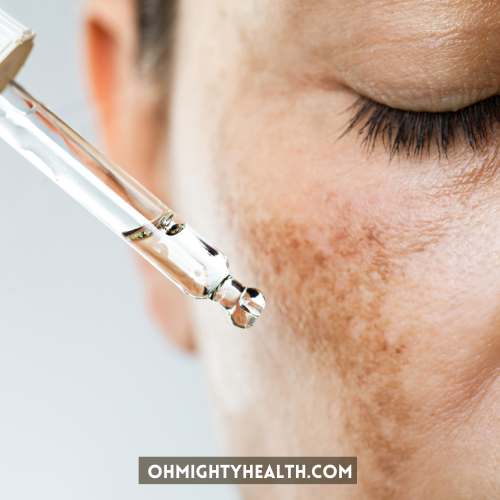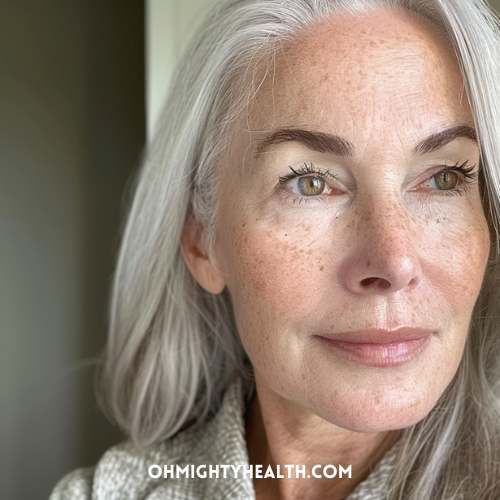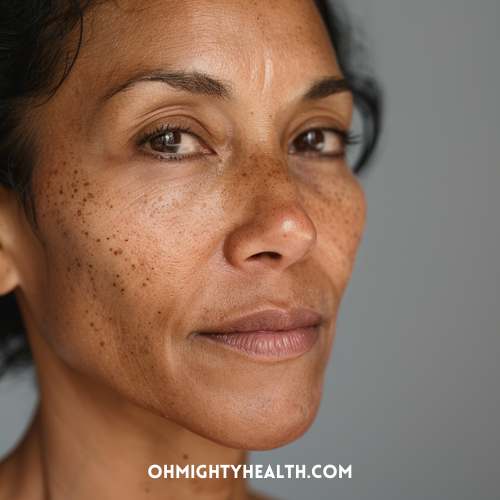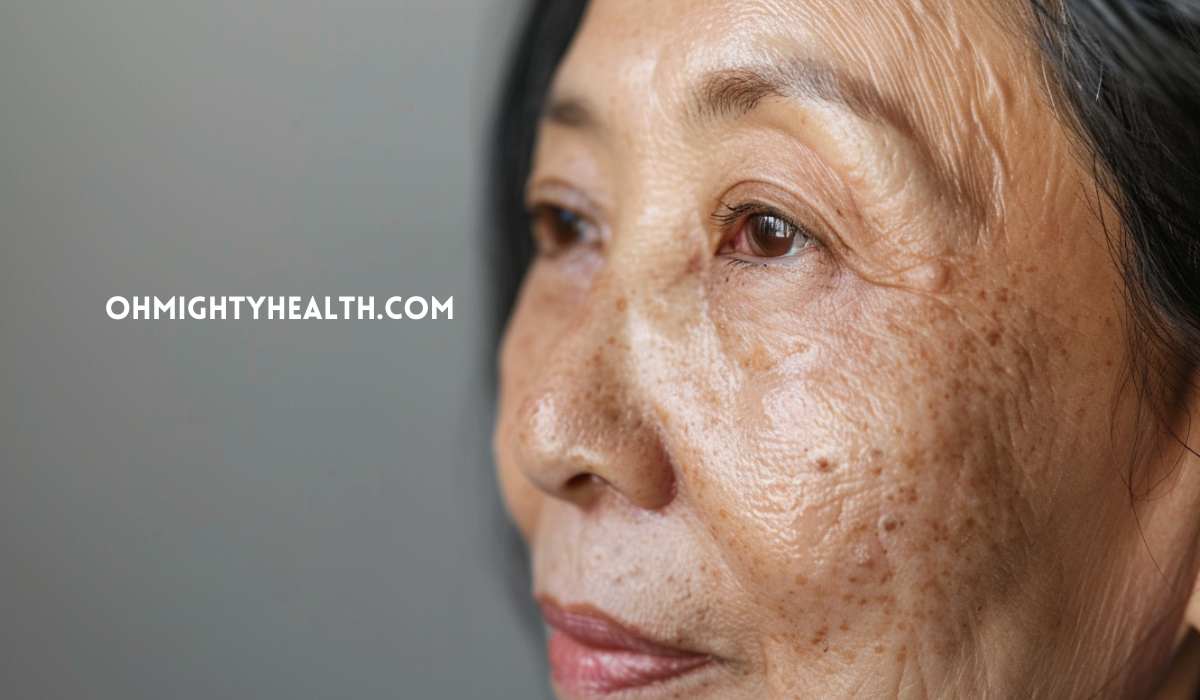All About Hyperpigmentation
What is hyperpigmentation? A quick overview
Hyperpigmentation is a common skin condition where patches of skin turn darker than the surrounding areas due to excess melanin production. It can affect anyone, regardless of skin colour or type, and manifest in various forms, including:
- Sunspots: Dark patches resulting from prolonged sun exposure.
- Melasma: Often associated with hormonal changes, presenting as large patches, primarily on the face.
- Post-Inflammatory Hyperpigmentation (PIH): Dark spots that appear after skin injury or inflammation, such as acne.
Though mainly a cosmetic concern, it can impact one’s emotional well-being. Prevention includes regular sunscreen use, protective clothing, and gentle skin care. Treatment ranges from topical creams like hydroquinone and retinoids to professional procedures like chemical peels and laser therapy. For best results and guidance, consulting with a dermatologist is recommended.


Types of hyperpigmentation
Hyperpigmentation is not a one-size-fits-all term; it encompasses several conditions, each with unique triggers and appearances. Understanding these types can aid in identifying and treating them effectively.
Sunspots (age spots or liver spots)
- Causes: Primarily caused by years of unprotected sun exposure, sunspots are the skin’s response to protect itself from UV radiation. They’re more common in older adults, hence the name “age spots,” but younger people can get them too, especially if they spend a lot of time in the sun.
- Characteristics: These are small, flat, dark areas that are typically tan, brown, or black. They vary in size and usually appear on sun-exposed areas: face, hands, shoulders, and arms.
- Prevention and treatment: Regular use of sunscreen, wearing protective clothing, and avoiding peak sun hours can prevent new sunspots. Treatments include topical creams, chemical peels, laser therapy, and cryotherapy for existing spots.

Melasma
- Causes: Melasma is closely linked to hormonal fluctuations, often triggered by pregnancy (hence the nickname “the mask of pregnancy”), birth control pills, or hormone therapy. It can also be exacerbated by sun exposure.
- Characteristics: It appears as larger patches of darkened skin, usually symmetrical and on the face (cheeks, forehead, bridge of the nose, and chin). Unlike sunspots, melasma covers larger areas and often has a splotchy appearance.
- Prevention and treatment: Sun protection is crucial in managing melasma, as UV exposure can worsen the condition. Other treatments include topical depigmenting agents, chemical peels, and laser therapy, often combined with sun avoidance strategies.
Post-inflammatory hyperpigmentation (PIH)
- Causes: PIH results from skin injury or inflammation. Common causes include acne lesions, burns, cuts, or irritation from cosmetic procedures. It occurs when the skin’s healing process leads to excessive melanin production in the affected area.
- Characteristics: PIH manifests as flat spots of discoloration that can vary in color from pink to red, brown, or black, depending on the skin tone and the depth of the discoloration. These spots can occur anywhere on the body where an injury or inflammation has occurred.
- Prevention and treatment: The best prevention for PIH is to address any underlying inflammatory skin conditions and to avoid skin injuries. Once PIH occurs, treatments focus on promoting even skin tone with topical treatments (e.g., retinoids, vitamin C), chemical peels, and laser therapy. Protecting the skin from further inflammation and sun exposure is also vital.
Each type of hyperpigmentation requires a tailored approach to treatment, emphasizing the importance of understanding their distinct causes and characteristics. Consulting with a dermatologist is the best course of action for accurate diagnosis and effective treatment planning.
Causes of hyperpigmentation


Several factors can trigger the overproduction of melanin, leading to various forms of hyperpigmentation.
1. Sun exposure
One of the most common causes is prolonged exposure to the sun’s UV rays. UV radiation stimulates melanocyte activity, increasing melanin production in exposed skin areas.
2. Hormonal changes
Hormonal fluctuations, particularly those associated with pregnancy, menopause, or the use of birth control pills, can lead to melasma, a type of hyperpigmentation characterised by dark patches on the face.
3. Skin Injury
Injuries to the skin, such as cuts, burns, or acne, can result in post-inflammatory hyperpigmentation (PIH). This type occurs as the skin heals and leaves a darker patch of skin behind.
4. Certain medications
Some medications can increase the risk of hyperpigmentation. These include certain chemotherapy drugs, antimalarials, antiseizure drugs, and antibiotics, which can make the skin more prone to darkening in response to sunlight.
Understanding these causes is crucial for preventing and managing hyperpigmentation effectively. It’s also important to note that anyone can be affected by hyperpigmentation, regardless of skin type or colour, although the intensity and types may vary.
Treatment options
Managing hyperpigmentation effectively may require a combination of treatments, depending on the severity and type of hyperpigmentation. Here’s an overview of various treatment options:
Topical treatments
- Hydroquinone: A skin-lightening agent that reduces melanin production. It’s widely used for treating hyperpigmentation but should be used under a dermatologist’s guidance due to potential side effects.
- Retinoids: These vitamin A derivatives promote skin renewal and can fade dark spots.
- Vitamin C: An antioxidant that inhibits melanin production, brightens the skin, and offers protection against sun damage.
- Alpha Hydroxy Acids (AHAs): Ingredients like glycolic acid help exfoliate the skin, removing dead skin cells and promoting an even skin tone.
Professional procedures
- Chemical peels: These involve applying a solution to the skin to remove the top layers, helping reduce the appearance of dark spots.
- Laser therapy: Targets melanin deposits without harming the skin’s surface. Different types of lasers are used, depending on the hyperpigmentation severity and skin type.
- Microdermabrasion: A minimally invasive procedure that exfoliates the skin’s surface, leading to a brighter complexion and reduced pigmentation over time.
Home remedies
- Aloe vera: Contains aloesin, which can lighten hyperpigmentation by inhibiting melanin production.
- Green tea extract: Applying green tea bags to the skin can reduce melanin production and help in lightening dark spots.
- Licorice extract: Known for its skin-lightening properties, it can be applied to reduce melanin production and fade hyperpigmentation.
It is important to note that treatment efficacy varies among individuals, and patience is key, as results may take several weeks or months to appear.
Additionally, some treatments may not be suitable for all skin types or during pregnancy, so consultation with a dermatologist is crucial before starting any new regimen.
Lastly, while exploring treatment options, continuing to protect the skin from sun exposure remains essential to prevent further hyperpigmentation.
Care and maintenance
Maintaining a consistent skincare routine and choosing the right products are crucial steps in reducing hyperpigmentation and preventing its recurrence.
Here’s how you can care for your skin:
Skincare routines and products
- Gentle cleansing: Start with a gentle cleanser to remove impurities without stripping the skin’s natural oils, which can exacerbate pigmentation issues.
- Sun protection: Daily application of a broad-spectrum sunscreen with SPF 30 or higher is non-negotiable to prevent further darkening of hyperpigmented areas.
- Antioxidants: Incorporate serums or creams rich in antioxidants like vitamin C, which can help brighten the skin and even out skin tone.
- Exfoliation: Use products containing AHAs or BHAs to promote cell turnover and remove the darkened layers of skin. However, be cautious not to over-exfoliate, as this can irritate the skin and worsen hyperpigmentation.
- Hydration: Keep the skin well-hydrated with a moisturizer suited to your skin type. Hydrated skin can heal better and is more resilient to environmental stressors.
Vegan & natural hyperpigmentation skin care routine
Creating an effective skincare routine for hyperpigmentation using vegan and natural ingredients is entirely possible.
While the focus shifts towards plant-based and cruelty-free products, the principles of targeting hyperpigmentation remain the same: protect, correct, and hydrate.
Here’s how you could structure such a routine:
Morning
- Cleanser: Start with a gentle cleanser made from natural ingredients, such as aloe vera or chamomile extract, which soothes and hydrates the skin without stripping it.
- Vitamin C serum: Look for a serum with a natural source of vitamin C, such as kakadu plum or camu camu. These ingredients can help brighten the skin and offer antioxidant protection. Aim for formulations that also include ferulic acid, a natural compound that can enhance the stability and efficacy of vitamin C.
- Moisturiser: Choose a lightweight moisturizer with natural hydrating ingredients, such as squalane (derived from olives) or hyaluronic acid (sourced from the fermentation of plants).
- Sunscreen: Use a mineral-based sunscreen with zinc oxide or titanium dioxide. These ingredients are natural physical blockers that provide broad-spectrum protection. Ensure the product is labelled as vegan and cruelty-free.
Evening
- Cleanser: Repeat the morning cleansing routine to remove sunscreen and any impurities.
- Retinol alternative: Bakuchiol is a plant-based alternative to retinol that has been shown to help in the reduction of hyperpigmentation without the irritation often associated with retinoids. Apply a bakuchiol serum to clean dry skin.
- Hydrating serum: After the bakuchiol serum has been absorbed, apply a serum with plant-derived hyaluronic acid to hydrate and plump the skin.
- Niacinamide moisturiser: Use a niacinamide-containing moisturizer derived from natural sources. Niacinamide can help to lighten dark spots and improve skin barrier function. Look for products that combine niacinamide with soothing ingredients like green tea extract or allantoin.
Weekly treatment (optional)
- Chemical peel: Once a week, consider using a gentle at-home peel with natural AHAs (alpha hydroxy acids) like glycolic acid from sugarcane, lactic acid from sour milk, or fruit enzymes. Start with a product that has a lower concentration to minimize the risk of irritation.
Tips
- It’s important to introduce new products one at a time to monitor your skin’s response.
- If you experience irritation, especially from the weekly peel, consider reducing the frequency of use.
- While natural and vegan ingredients can be very effective, it’s essential to remember that results can vary, and patience is key. It may take several weeks or even months to see significant improvements in hyperpigmentation.
- Always check the product labels to ensure they meet your vegan and cruelty-free standards.
Prevention and management
Preventing and managing hyperpigmentation involves both protective measures against its causes and lifestyle choices that can mitigate existing conditions. Here are some effective strategies:
Prevention tips
- Sunscreen: Applying broad-spectrum sunscreen with at least SPF 30 daily is crucial, even on cloudy days. Sunscreen helps protect the skin from harmful UV rays that trigger melanin production.
- Avoid direct sun exposure: Seek shade and wear protective clothing, hats, and sunglasses to minimize sun exposure, especially during peak hours from 10 a.m. to 4 p.m.
- Gentle skin care: Use gentle, non-abrasive skin care products to avoid irritating the skin, which can lead to post-inflammatory hyperpigmentation.
Management strategies
- Topical treatments: Products containing ingredients like vitamin C, retinoids, azelaic acid, and niacinamide can help fade dark spots by inhibiting melanin production and accelerating cell turnover.
- Healthy diet: A diet rich in antioxidants can support skin health. Fruits, vegetables, nuts, and seeds are packed with vitamins and minerals that can help protect the skin.
- Hydration: Keeping the skin hydrated with moisturizers suitable for your skin type can improve its appearance and help diminish dark spots.
- Professional treatments: For persistent hyperpigmentation, dermatological treatments such as chemical peels, microdermabrasion, and laser therapy can be effective. These treatments should be carried out by professionals and tailored to individual skin types and conditions.
Incorporating these preventive and management practices into your daily routine can significantly impact the appearance of hyperpigmentation and overall skin health. Always consult with a dermatologist before starting any new treatment, especially for severe cases, to ensure it’s suitable for your skin type and condition.
Consulting with a dermatologist
- For persistent or severe hyperpigmentation, it’s essential to consult with a dermatologist. They can provide a tailored treatment plan, which may include prescription-strength creams, professional procedures, or both.
- A dermatologist can also help identify the underlying causes of hyperpigmentation and offer advice on preventive care to avoid its recurrence.
- Remember, what works for one person may not work for another, and a dermatologist can help you navigate through the myriad of options to find the most effective treatment for your skin type and condition.
Taking these steps can help manage hyperpigmentation effectively. Patience and consistency are key, as improvements can take time.
FAQs
How do I choose the right treatment for my hyperpigmentation?
The choice of treatment depends on the type of hyperpigmentation, your skin type, and any underlying conditions. Over-the-counter products containing ingredients like vitamin C, retinoids, and AHAs can be effective for milder cases. For more severe hyperpigmentation, professional treatments like chemical peels or laser therapy may be recommended. Consulting with a dermatologist is crucial to determine the most suitable treatment plan.
How long does it take to see results from hyperpigmentation treatments?
Results can vary widely depending on the treatment type and severity of hyperpigmentation. Over-the-counter products may show improvements in a few weeks to months with consistent use. Professional treatments might offer quicker results, but multiple sessions are often required for optimal outcomes. Patience is key, as skin regeneration takes time, and premature evaluation of treatment efficacy can be misleading.
Can hyperpigmentation be completely cured?
While many treatments can significantly reduce the appearance of hyperpigmentation, a complete cure may not be possible for all cases. The goal is to lighten the pigmented areas to blend more seamlessly with the surrounding skin. Preventative measures, ongoing care, and avoiding triggers like sun exposure are essential to manage hyperpigmentation long-term.
Is hyperpigmentation preventable?
While not all hyperpigmentation can be prevented, especially that which is caused by hormonal changes or genetics, minimizing sun exposure and protecting the skin with broad-spectrum sunscreen can significantly reduce the risk of sun-induced hyperpigmentation. Additionally, avoiding skin irritation and managing skin conditions like acne can help prevent PIH.
Why does hyperpigmentation seem to get worse with age?
As we age, our skin undergoes various changes that can exacerbate hyperpigmentation. The skin’s natural regeneration slows down, leading to prolonged visibility of dark spots. Cumulative sun exposure over the years also plays a significant role, as it can increase and darken existing pigmentation. Additionally, hormonal changes associated with ageing can trigger or worsen conditions like melasma. Using sun protection and incorporating brightening products into your skincare routine can help manage hyperpigmentation as you age.
Does menopause have anything to do with more acute hyperpigmentation?
Yes, menopause can indeed play a role in the development of more acute hyperpigmentation. During menopause, the body undergoes significant hormonal changes, including a decrease in estrogen levels.
Estrogen is known to regulate melanin production; thus, its decline can lead to an imbalance in melanin synthesis. This imbalance can exacerbate existing hyperpigmentation or lead to the development of new dark spots, particularly in areas exposed to the sun.
Additionally, the skin’s ability to repair itself diminishes with age, making it more susceptible to the effects of UV exposure and contributing to the severity of hyperpigmentation during menopause.
Therefore, it’s important for individuals going through menopause to adopt preventive skincare measures, such as using sunscreen regularly and incorporating products that target hyperpigmentation into their skincare routine.
Summary
Hyperpigmentation, a condition where patches of skin become darker than their surroundings, is caused by excess melanin production.
It can affect anyone, regardless of skin type or colour, and manifests in various forms such as sunspots, melasma, and post-inflammatory hyperpigmentation (PIH).
Factors like sun exposure, hormonal changes, skin injuries, and certain medications are known triggers.
Although primarily affecting skin appearance, hyperpigmentation can also impact emotional well-being, leading to decreased confidence and social anxiety.
Prevention and management include using sunscreen, gentle skincare, and dietary choices to support skin health.
Treatment options range from topical agents like hydroquinone and vitamin C to professional procedures such as chemical peels and laser therapy.
Consistent skincare routines and consulting with a dermatologist for severe cases are essential for effective management and maintenance.
Understanding and addressing hyperpigmentation holistically can significantly improve skin health and quality of life.
Resources
- Friedmann PS, Gilchrest BA. Ultraviolet radiation directly induces pigment production by cultured human melanocytes. Journal Cellular Physiology [Internet]. 1987 [cited 2024 Mar 3]; 133(1):88–94. Available from: https://onlinelibrary.wiley.com/doi/10.1002/jcp.1041330111.
- Hassan S, Zhou XA. Drug-Induced Pigmentation. In: StatPearls [Internet]. Treasure Island (FL): StatPearls Publishing; 2024 [cited 2024 Mar 3]. Available from: http://www.ncbi.nlm.nih.gov/books/NBK542253/.
- Lephart ED, Naftolin F. Menopause and the Skin: Old Favorites and New Innovations in Cosmeceuticals for Estrogen-Deficient Skin. Dermatol Ther (Heidelb) [Internet]. 2020 [cited 2024 Mar 3]; 11(1):53–69. Available from: https://www.ncbi.nlm.nih.gov/pmc/articles/PMC7859014/.

